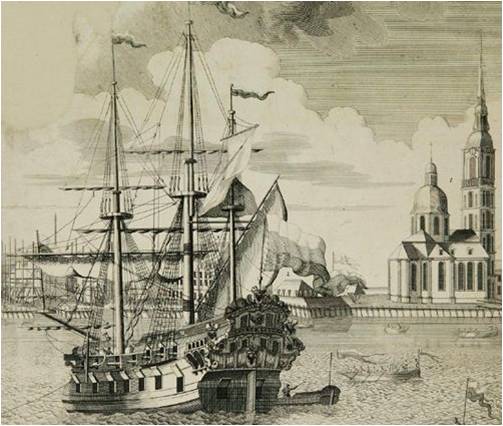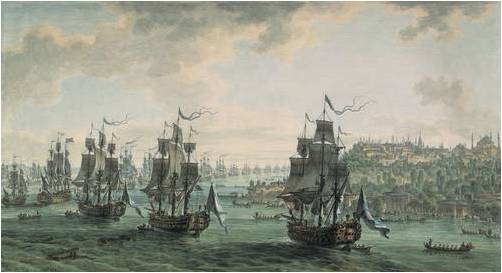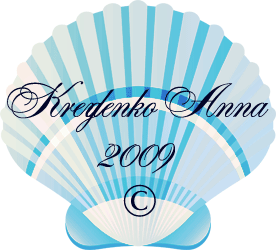Russian art
Îñîáîå ìåñòî çàíèìàåò ìîðñêîé ïåéçàæ â ðóññêîé æèâîïèñè.
![]() Seascape plays a special role in Russian art. First imageries of the sea appeared in ancient Russian icon
painting. It was similar to scheme. The figures of Christ, Virgin Mary, Saints and Angels in ancient icons
were depicted against the background of schematic landscape. Low hills symbolized rocky area, sparse trees –
forest and small water body meant raging sea. The icon “Calming Sea” by Nicola Zaraskoy (XVI century) can be
an example of it.
Seascape plays a special role in Russian art. First imageries of the sea appeared in ancient Russian icon
painting. It was similar to scheme. The figures of Christ, Virgin Mary, Saints and Angels in ancient icons
were depicted against the background of schematic landscape. Low hills symbolized rocky area, sparse trees –
forest and small water body meant raging sea. The icon “Calming Sea” by Nicola Zaraskoy (XVI century) can be
an example of it.
The development of marine genre in Russia is connected with Peter I,
the creator of the Russian fleet. The emperor attached great importance to art as a way
to popularize the ideas of the Russian naval power. From Holland he invited Adam Silo,
 who was a shipwright, and then he became a seascape artist. His paintings were hung in Peter’s palace.
But soon no Dutch artists were needed, as a lot of Russian artists began to depict sea in their paintings.
Among them was M. I. Makhaev, who was notable for his accurate drawing.
who was a shipwright, and then he became a seascape artist. His paintings were hung in Peter’s palace.
But soon no Dutch artists were needed, as a lot of Russian artists began to depict sea in their paintings.
Among them was M. I. Makhaev, who was notable for his accurate drawing.
The strengthening of Russia on the Baltic Sea, near the Azov Sea and near the Black Sea
in the XVIII century caused the development of maritime art. The graduate of the Academy of
 Arts, M. M. Ivanov (1748-1823) was sent to the south to paint there. He was assigned to G. A. Potemkin.
The artist visited the Crimea twice. He often painted seascapes.
Arts, M. M. Ivanov (1748-1823) was sent to the south to paint there. He was assigned to G. A. Potemkin.
The artist visited the Crimea twice. He often painted seascapes.
The first Russian marines were painted by the pupil of M. M. Ivanov –
Maxim Vorobiev. But many other marine artists worked at that time: Fedor Yakovlevich Alekseev
(1753-1824), Theodore Mihajlovich Matveev (1758-1826), and Sylvester Feodosiyevich Shchedrin
(1791-1830). The first paintings of Shchedrin were created in classical style. In the second half
of his life he painted seascapes in Italy. We can see new possibilities of realistic style in these
marines.
M. N. Vorobiev was the first Russian artist to paint marines and maritime battles.
 These themes were the main ones in his art. Unfortunately many of his pictures were lost. Among
them were “Gale at the Black Sea”, “The ship “Maria” at the Black Sea” and “The Explosion of The
Varna”. Vorobiev’s painting contributed much to the development of the Russian marine art. He became
one of the most prominent artists in landscape genre painting.
These themes were the main ones in his art. Unfortunately many of his pictures were lost. Among
them were “Gale at the Black Sea”, “The ship “Maria” at the Black Sea” and “The Explosion of The
Varna”. Vorobiev’s painting contributed much to the development of the Russian marine art. He became
one of the most prominent artists in landscape genre painting.
In the XIXth century the Admiralty paid special attention to  glorification of Russian naval victories with the help of art. To this end the
Main Naval Staff instituted the title of staff’s artist. The first artist to have
such title was I. K. Aivazovsky.
He was a romanticist. In his paintings the artist depicted the struggle
between people and sea element. To paint such masterpieces as “The Ninth
Wave” and “Wave”, “Among the waves” Aivazovsky used his imagination.
glorification of Russian naval victories with the help of art. To this end the
Main Naval Staff instituted the title of staff’s artist. The first artist to have
such title was I. K. Aivazovsky.
He was a romanticist. In his paintings the artist depicted the struggle
between people and sea element. To paint such masterpieces as “The Ninth
Wave” and “Wave”, “Among the waves” Aivazovsky used his imagination.
The support of the Admiralty helped marine art to develop. Two marine-artists, A. P.
Bogolyubov and A. K. Beggrov, in the first half of the XIXth century began to paint seascapes after being
educated at Naval Colleges.
A. P. Bogolyubov preferred to depict the serene. We can’t see any romantic impulse,  the thunder of explosions, cannonade, gun volley or any other “music of battle” in his seascapes. His paintings
are rather realistic and accurate, as he was a naval officer in his youth.
the thunder of explosions, cannonade, gun volley or any other “music of battle” in his seascapes. His paintings
are rather realistic and accurate, as he was a naval officer in his youth.
Aivazovsky and Bogolybov made seascape genre painting extremely popular in Russia. The creative work
of many other Russian artists,
who have ever painted seascapes, is connected with the art of Aivazovsky and Bogolybov.
 There was not a single artist in Russia, who having visited the seaside did not
try to paint it. Some artists painted seascapes during all their life. There were also artists, who
depicted sea occasionally. Such artists as V. I. Surikov, I. Y. Repin, P. P. Sokolov and A. E. Arkhipov
also painted seascapes. But nevertheless the number of marine-artists was limited, maybe because such
artists should possess very rare talents.
We can’t but mention great marine artists of the second half of the XIXth century: L. F. Lagorio,
I. P. Pohitoniv and R. G. Sudkovsky.
There was not a single artist in Russia, who having visited the seaside did not
try to paint it. Some artists painted seascapes during all their life. There were also artists, who
depicted sea occasionally. Such artists as V. I. Surikov, I. Y. Repin, P. P. Sokolov and A. E. Arkhipov
also painted seascapes. But nevertheless the number of marine-artists was limited, maybe because such
artists should possess very rare talents.
We can’t but mention great marine artists of the second half of the XIXth century: L. F. Lagorio,
I. P. Pohitoniv and R. G. Sudkovsky.
The Soviet marine art was realistic. The main leaders of it were V. N. Filatov,
A. V. Kuprin and P. P. Konchalovsky.

